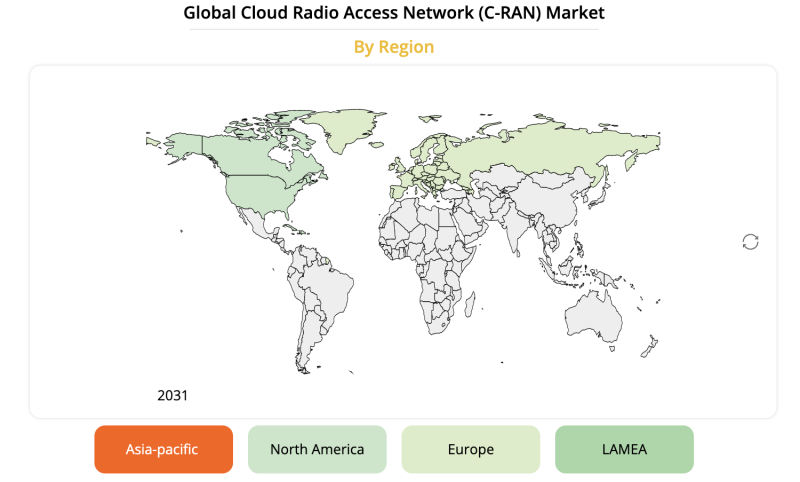Allied Market Research predicts that the cloud radio access network (C-RAN) market will reach a whopping $96 billion by 2031, up from $14.2 billion in 2021, as the proliferation of 5G network technologies is driving the use and demand for C-RAN.
The market researchers said that the COVID-19 pandemic had a positive impact on the C-RAN market because of the boom in streaming and other online services while everybody was trapped at home, which increased the strain on wireless networks.
“Telecom operators and mobile infrastructure service providers are seeking effective cellular networking solutions, such as C-RAN, which directly influence the market growth all over the world,” AMR said.
AMR stated that the Asia-Pacific region dominated the C-RAN market in 2021 and would remain strong through the next decade. The researchers, however, noted that Europe is expected to experience significant growth during the forecast period, with LTE-Advanced and 5G networks driving a considerable expansion of C-RAN during that period.

AMR also found that indoor deployment dominated the C-RAN segment in 2022 and that will continue through the decade. “As RAN and small cell solutions allow mobile operators to deliver additional network capacity easily and cost-effectively, with enhanced mobile experiences in residential applications,” AMR said.
The researchers noted that outdoor deployment will increase, helping to deliver lower energy costs and increased network resilience to 5G communications.
What is C-RAN?
Cloud-RAN is part of the move away from the macro base station architectures that prevailed in 2G, 3G, and 4G. Starting in the 4G era, operators and vendors began to experiment with distributed base station layouts. This new network architecture used centralized baseband units (BBUs) to synchronize clusters of remote radio heads (RRHs), with the BBUs and RRHs connected with fiber links.
The C-RAN players
AMR said that the global C-RAN market is dominated by players such as Altiostar, Cisco, Ericsson, Fujitsu, Huawei, Intel, NEC, Nokia, Qualcomm, Samsung and ZTE.
